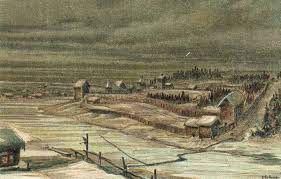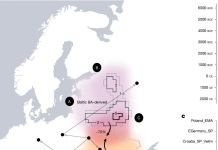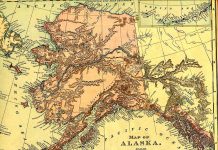The Chronicle of Novgorod published in 1914 is an invaluable document for many reasons. One of them is that it was redacted by Prof. A. Shakhmatov, a prominent figure ” credited with laying the foundations for the science of textology”. So we can be sure that the text is correct. Second, the Chronicle proves that the myth of the Moscow foundation in 1147 by Kyiv prince Yury Dolgoruky is a fake. Here is a direct quote:
A.D. 1147. A.M. 6655. In the autumn Svyatopolk with the whole Novgorod province went against Gyurgi wishing to go against Suzhdal, and turned back at Novi-torg for the bad roads.
Gyurgi above is Yury Dolgoruky. In modern-day language, it is Georgy another name for Yury.
A.D. 1148. A.M. 6656. The same winter Izyaslav, son of Mstislav, came to Novgorod from Kiev, and went to Rostov against Gyurgi with the men of Novgorod; and they made much war on Gyurgi’s people, and took six small towns on the Volga, they laid waste as far as Yaroslavl, and took 7,000 heads (captives), and turned back for the bad roads.
The quotes above show a couple of important realities:
- Yury Dolgoruky was an enemy of both Kyiv and Novgorod at the time.
- Kyiv and Novgorod both wanted to kill him.
- There was no way Dolgoruky could be building Moscow for the reason that Moscow was almost halfway between Novgorod and Suzdal where he was hiding.
The Chronicle of Novgorod does not mention Moscow in the 12th century altogether. The first time Moscow gets mentioned is in 1238 during the initial attack of the Golden Horde. And the quote is “the Moscovites, of whom many were inexperienced, were frightened and in despair of their lives at sight of the great numbers of Tartars, others turned to flight…”
It means that Moscow already existed at that time but who founded and what kind of settlement was it? Interestingly, the word Moskva is not of Slavic etymology but resembles Finnish names such as Narva. One of the versions of its composition is ‘Moss + akva“, Dirty Water.
Another version is that it derives from the old-Finnish word ‘muskuva‘ which translates as ‘smelly, stinky’ describing upstream standing water. And that is exactly the area where Moscow is situated. If you did not know, the second central square next to the Red Square is called Bolotnaya Square where the name ‘boloto’ literally means the marsh.
Taking into account that the area was populated by the Volga Finns, it is logical to assume that Moskva was a little Volga Finnish settlement all the way until the Golden Horde turned it into the capital city of their province.
Read How Moscow Became Capital in 1327 >
Moxel province to the north of Kyiv Rus >
The “Gardariki, Ukraine‘ e-book has more insights into how Moscow tried to steal history of Kyiv.










